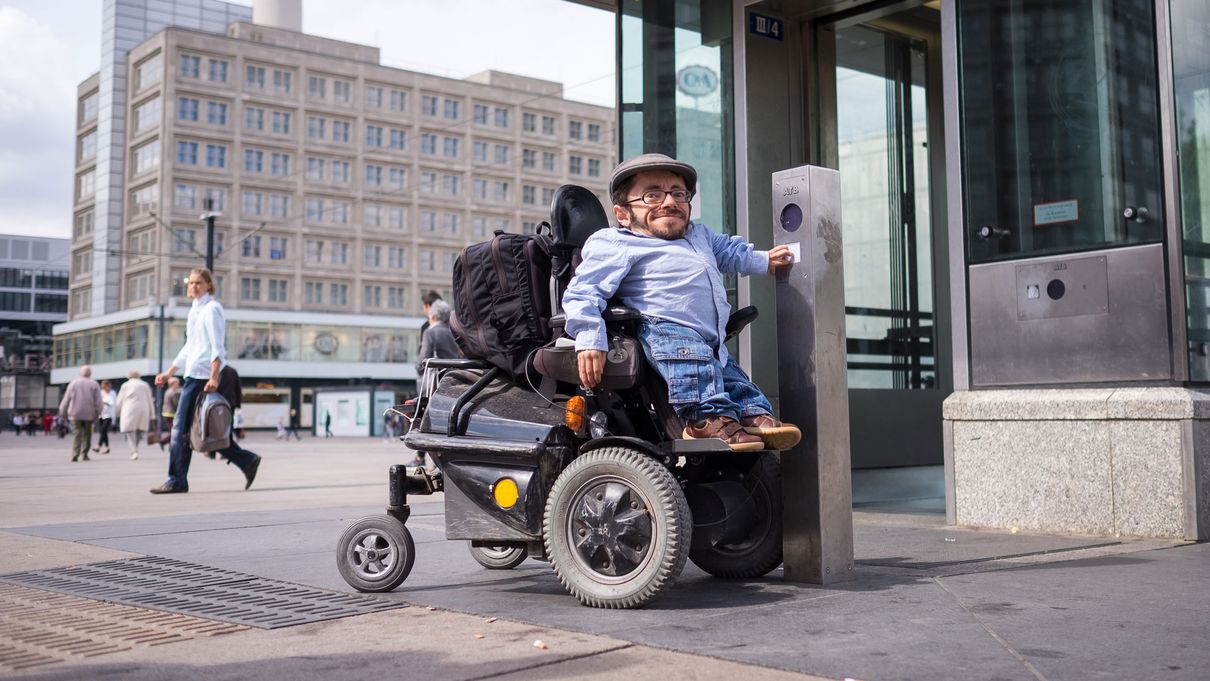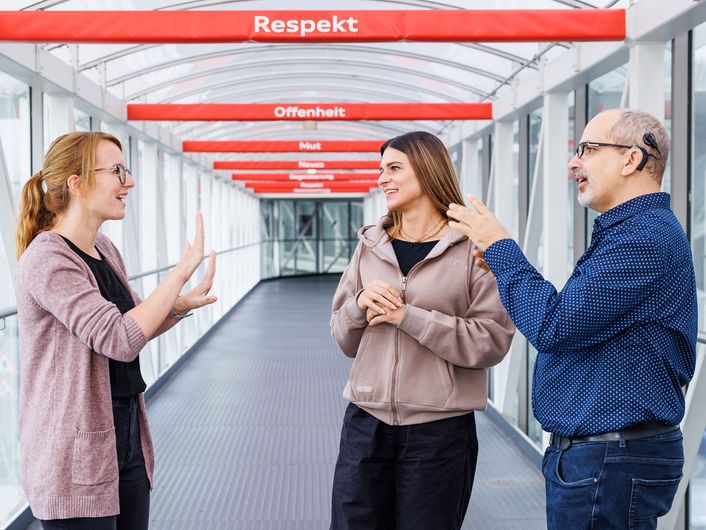Wheelmap on Audi Social Day: For a barrier-free world
.jpg?imwidth=1210&imdensity=1)
Audi e-tron GT: Power consumption (combined) in kWh/100 km: 21.6–19.6CO₂ emissions (combined) in g/km: 0CO₂ emission class: A
Audi e-tron GT: Power consumption (combined) in kWh/100 km: 21.6–19.6CO₂ emissions (combined) in g/km: 0CO₂ emission class: A
Is there an elevator? Is the entrance barrier-free? Is the counter easily reachable? On Audi Social Day, employees worldwide will test whether their neighborhood is barrier-free by supporting Wheelmap, which shares wheelchair-accessible places.
At some point, university friends Raúl Krauthausen and Holger Dieterich realized that they always met in the same café – in the same wheelchair-accessible café – because Krauthausen relies on a wheelchair, just like 1.6 million other people in Germany alone. This gave rise to the idea for Wheelmap in 2010: a map of wheelchair-accessible locations that can be used via smartphone all over the world. The accessibility app has already tracked more than 3.2 million locations around the globe, including barrier-free cafés.

On Audi Social Day on June 24, Audi employees will work together to help further expand Wheelmap. Employees from all Audi production locations will get involved with social institutions on site and digitally in an international effort to help people with disabilities from all demographics: children, seniors, refugees and the disenfranchised. This project – from the association founded by Krauthausen, Sozialheld*innen e.V. – is just one of the activities that Audi employees worldwide can participate in on this day. After a joint Teams call, they will venture into the world with Wheelmap on their smartphones. The advantage in times of “better normal” is that everyone can participate wherever they are, regardless of location – at home, at a friend’s house or on vacation.
“Even a single step at an entrance can represent an insurmountable obstacle. Such mobility restrictions are exactly where Wheelmap comes in”

“Even a single step at an entrance can represent an insurmountable obstacle. Such mobility restrictions are exactly where Wheelmap comes in”
– Wheelmap founder Raúl Krauthausen

“Even a single step at an entrance can represent an insurmountable obstacle. Such mobility restrictions are exactly where Wheelmap comes in,” Krauthausen, the Wheelmap founder, said. Users provide each other with information about how accessible a place is. To that end, Wheelmap’s rating system was designed to be simple – no disability inclusion experts are required to contribute. Supermarkets, cafés, swimming pools, bus stops and a multitude of other places can be recorded on the map using an intuitive traffic light system: as wheelchair accessible, partially wheelchair accessible or not wheelchair accessible.
Wheelmap is helping to fight immobility in everyday life
“Accessibility is a prerequisite to enable people with disabilities to participate in everyday life,” said Tobias Munzel, an inclusion officer at Audi. Jochen Biber, a representative for severely disabled people on Audi’s works council, added: “It should be normal to consider the needs of people with disabilities – in both private and professional life. Beyond accessibility, the right mindset is also crucial. Only with mutual understanding and consideration can we interact well with each other.”
.jpg?imwidth=1210&imdensity=1)
Audi e-tron GT: Power consumption (combined) in kWh/100 km: 21.6–19.6CO₂ emissions (combined) in g/km: 0CO₂ emission class: A
Audi e-tron GT: Power consumption (combined) in kWh/100 km: 21.6–19.6CO₂ emissions (combined) in g/km: 0CO₂ emission class: A
The four rings have been committed to inclusion in the workplace at their locations for years. Besides accessibility, focal points of this commitment include ergonomically designed workplaces and supportive team and management structures. However, inclusion doesn’t end at the factory gates for Audi. As well as the Wheelmap initiative and involvement with institutions for people with disabilities on Audi Social Day, Audi has campaigned for barrier-free mobility for years – for instance, with driving aids for people with limited mobility.
Shaping barrier-free mobility

Shaping barrier-free mobility
The Wheelmap accessibility team is also concerned with barrier-free mobility. They recently created guidelines for wheelchair-accessible EV charging on behalf of the Federal Ministry for Digital and Transport. “However, guidelines alone will not make infrastructure barrier-free,” Krauthausen said. “That’s why it’s important for cities, communities, manufacturers and operators to implement these standards now.”
The four rings are already actively involved in the field of progressive charging infrastructure with the Audi charging hubs. This fast-charging concept for urban spaces allows for a premium charging experience with barrier-free access – whether it’s for Audi drivers or drivers of other brands’ cars. The company is currently building a wheelchair-accessible fast-charging infrastructure for electric cars in city centers. With the help of a swivel arm, users can charge cars barrier-free across their entire width. The charging point operating displays are height-adjustable, and the paths between the charging cubes and vehicles are wide enough for wheelchair users.
Electric charging stations are not yet integrated into Wheelmap itself. However, the map is continuously being developed in terms of wheelchair-accessible parking and charging. For Social Day, Audi is backing Wheelmap with a donation of 50,000 euros.



